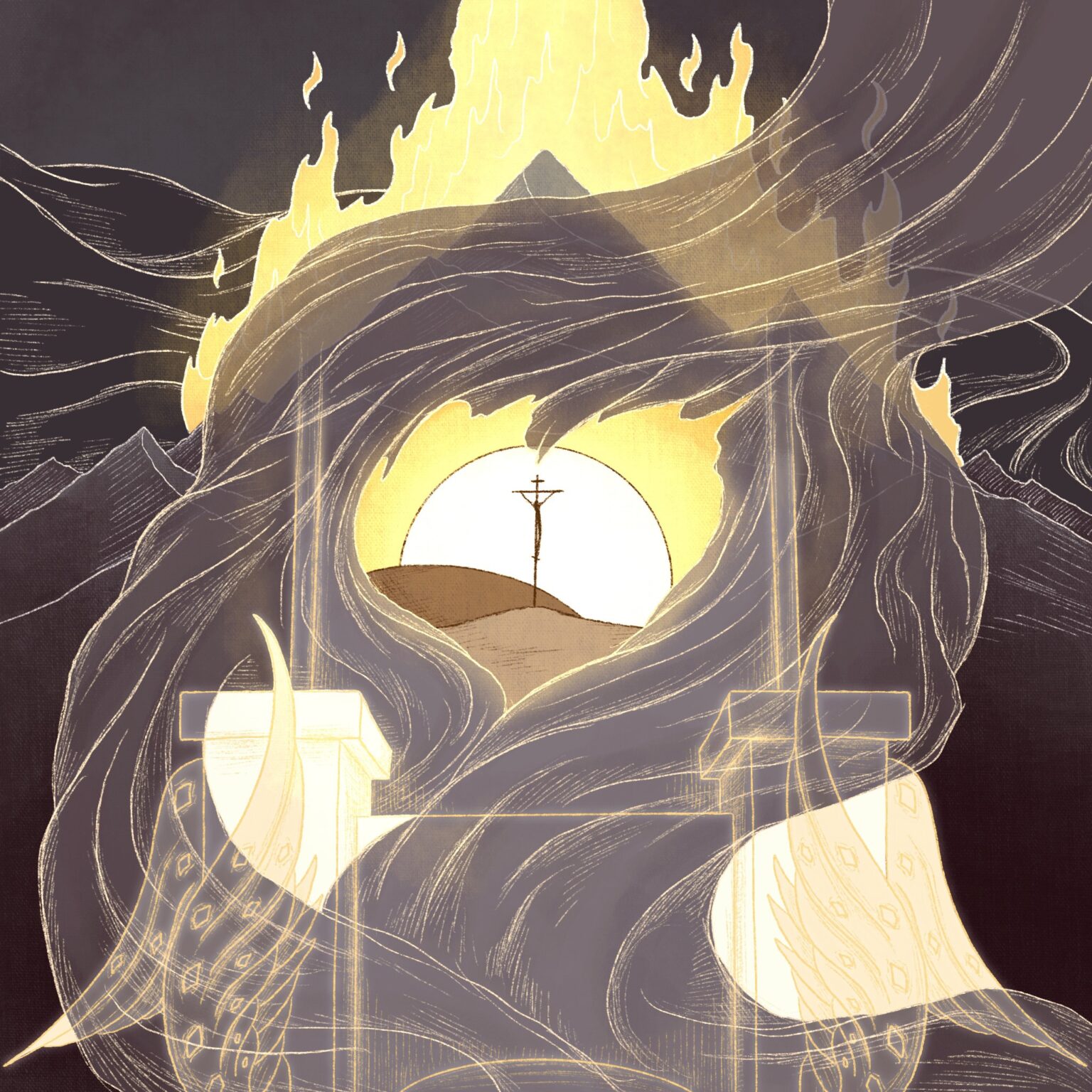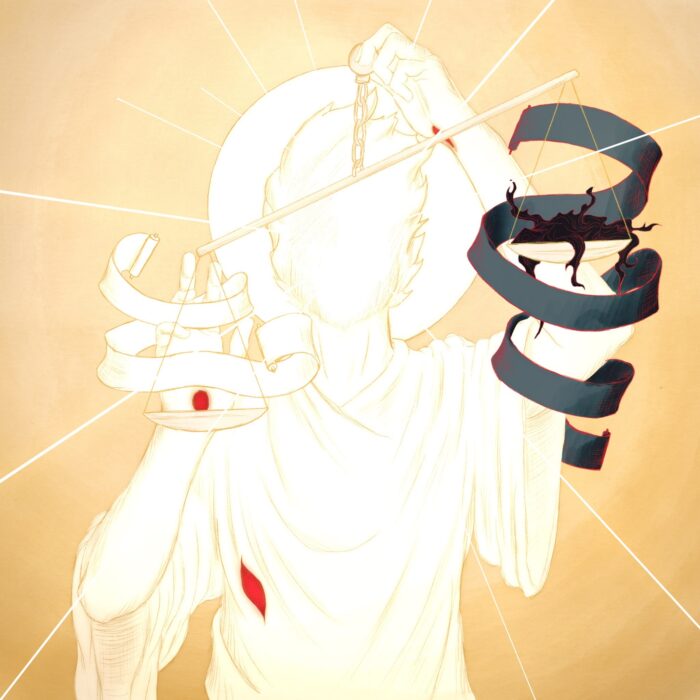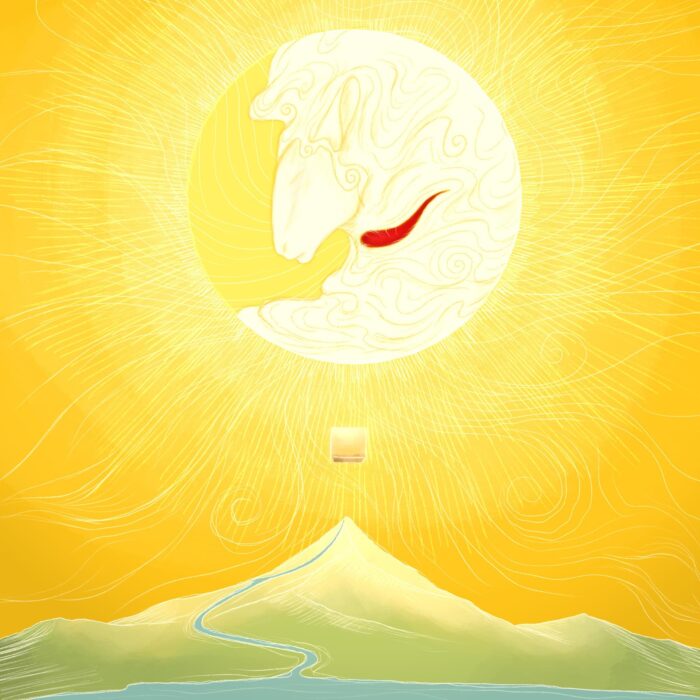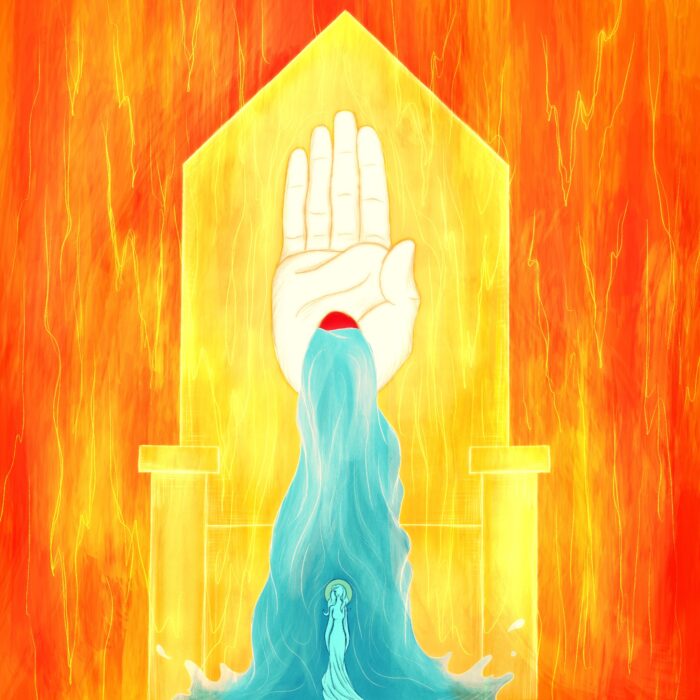Revelation 4:5, “And from the throne came flashes of lightning and rumblings and peals of thunder, and before the throne were burning seven torches of fire, which are the seven Spirits of God.”
Much to say here…perhaps I’ll eventually have a whole dissertation in which to say it. Let me just touch on some central points.
First, John is notoriously circumspect in his description of “the one seated on the throne.” He avoids any sort of anthropomorphic imagery, saying only that He is seated and has the appearance of precious stones. John’s language here performs the counter-intuitive task of creating an image in our mind of the unseen; the one seated on the throne is manifestly the unseen God. That John intends to highlight the unseen and unseeable nature of the one on the throne is made clear through John’s allusions to Sinai in the passage quoted above.
Sinai is, of course, the quintessential appearance of the unseen God. YHWH descends in darkness and fire and thunder and it is this moment that solidifies for the people of Israel that they are to have no visible representations of God since they “saw no form” on the mountain (Deut. 4:15). John uses typical Sinaitic imagery (lightning, thunder, “rumblings / voices,” and—especially interesting—λάμπας—which the LXX of Exodus 20:18 also uses for the illuminations visible on Sinai during the theophany) to present his vision of the invisible God as a sort of heavenly Sinai. Here is the God whose face no one has seen or can see.
Now, this is significant because, in chapter 5, John is going to see an image “in the midst of the throne,” namely, the image of the Slaughtered and Living Lamb. Where chapter 4 presents an unseen God veiled behind a Sinaiatic storm and fiery light, chapter 5 introduces a perceptible image, a form, a “face”—standing in the very heart of the throne and thus standing for the unseen one seated thereon. The Lamb’s position in the midst of the throne reveals Him to be the face of the unseen one, the “image of the invisible God.”
In Revelation 4 and 5, John seems to be saying in visionary form what he says in the poetic prose of the prologue to his Gospel, namely that “no one has ever seen God, but the only begotten God, who is in the bosom of the Father, He has made Him known” (1:18). Between chapters 4 and 5, the Word of the unseen God “becomes flesh” so that, in chapter 5, we behold His glory. The Slaughtered and Living Lamb stands in the midst of the throne—and so, in the Bosom of the Father—and from that place makes known or visually exegetes the invisible God. Revelation 4-5 may be read as the apocalyptic exposition of John 1:14-18.
And note also that the one who reveals the unseen God is precisely the Slaughtered One who lives forevermore. It is not merely a Lamb who becomes the face of God, but a slaughtered Lamb, and not merely a slaughtered Lamb, but a slaughtered Lamb who stands, who is alive…who lives forever as the slain one. The Lamb is not the face of the unseen God until He is the slaughtered Lamb who stands—until He is the crucified one who is raised (John 20:28)—only then does He become the one in whom the unseen God is seen and the unknown God is known.
The God at the center of reality, the God whom all of creation exists to see, savor, and sing (Rev.4:7ff), the God around whom the cosmos orbit as the gravitational heart of being itself, this God—unseen and unseeable in ages past—is now revealed, now made known, now declared to the world. And how has He declared Himself? In the Lamb, slaughtered as a sacrifice in place of the sinner, and now raised up to live eternally as the one poured out in love unto death. This is where power resides (seven horns), this is where holiness, wisdom, and knowledge reside (seven eyes), this is how authority is exercised (throne), this is the reality in relation to which all things find their meaning (concentric orbiting of the cosmos around the throne) — Hallowed be His Name.




